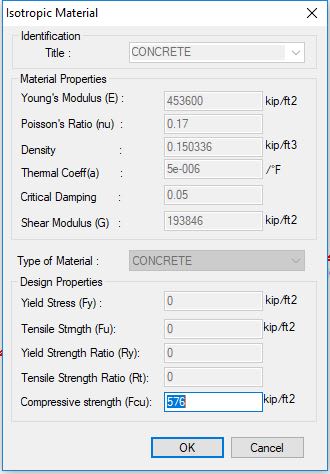JoelTXCive
Civil/Environmental
- Jul 24, 2016
- 933
I understand that Staad uses the moment distribution method for beams, a stiffness matrix for frames, and FEM for plates.
I'm trying to better understand how Staad works for concrete.
My core Concrete questions are:
1) How does Staad arrive at it's default assumed isotropic Young's modulus of 435,600 ksf? Is this a composite value that assumes some percentage of steel is in the concrete?
2) It appears, that Staad uses the full 100% moment of inertia for concrete sections, but I have heard talk that the software makes adjustments by assuming the concrete is cracked and uses a reduced MOI. Is this true?
The company I work for pays for all sorts of training and support from Bentley as part of our Staad/Microstation license, but I can't make heads or tails of their website. I have looked on Bentley's Connection Client & "LearnServer"; along with various other product support pages. Their website is incredibly confusing though.
Thanks!

I'm trying to better understand how Staad works for concrete.
My core Concrete questions are:
1) How does Staad arrive at it's default assumed isotropic Young's modulus of 435,600 ksf? Is this a composite value that assumes some percentage of steel is in the concrete?
2) It appears, that Staad uses the full 100% moment of inertia for concrete sections, but I have heard talk that the software makes adjustments by assuming the concrete is cracked and uses a reduced MOI. Is this true?
The company I work for pays for all sorts of training and support from Bentley as part of our Staad/Microstation license, but I can't make heads or tails of their website. I have looked on Bentley's Connection Client & "LearnServer"; along with various other product support pages. Their website is incredibly confusing though.
Thanks!

